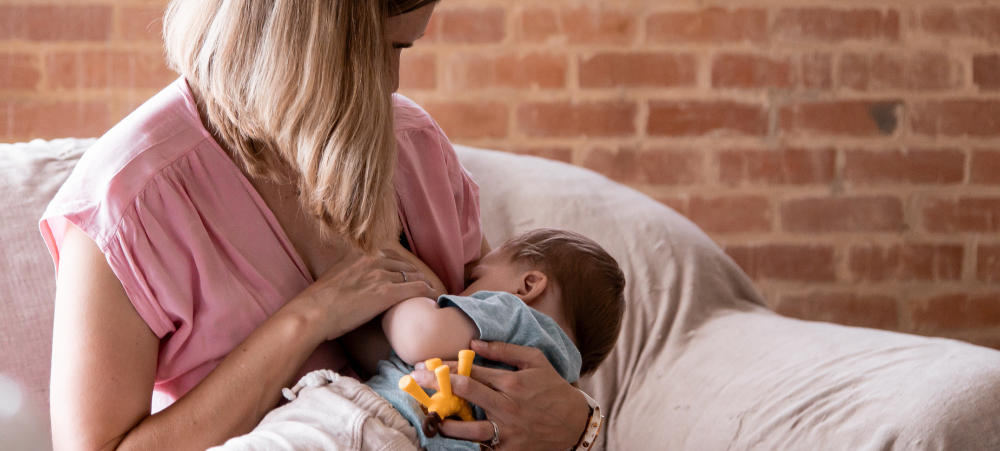Traditionally Hospital grade breast pumps have been Large, bulky, very expensive, multiuser breast pumps that have strong motor that allow of pumping multiple times a day and have a good longevity. These pumps were designed to help mothers build up their milk supply (for example with premature mothers) from scratch and then also maintain the mothers milk supply. In order to do this these pumps needed to have a variety of cycles and suction levels to effectively cause the milk ejection reflex (let-down) and then to drain the breast effectively. These pumps were traditionally kept in hospitals.
With the demand for better private and home use pumps Ameda has used technology to create their very own hospital grade breast pump that is available and affordable for mothers to have their own private hospital grade breast pump. The Mya Joy double electric hospital grade breast pump ticks all the boxes that mothers need for a private hospital grade breast pump:
- able to initiate breast milk production
- able to maintain breast milk supply
- 2-phase pumping
- Small and compact
- Quiet
- Portable (fits into a handbag, can clip onto your closes and uses batteries)
- Affordable
- Motor is capable of being used 8+ times a day
- Motor has a 2-year warranty
- Easy to use
- Additional flange sizes to make sure the pump fits you correctly
- Double electric- express both breasts at the same time
- Back up service and parts available
So why is a hospital grade breast pump different from other off the shelf breast pumps? The normal breast pumps do not have motors that are able to create a suction level of -250mm Hg and maintain it. They only can maintain a negative suction of about -170mm Hg. This is not sufficient to be used for increasing milk supply or to maintain it. It is ok to use if you are only pumping occasionally and your baby is breast feeding often from your breast. Your baby will then be able to drain and help your body to maintain your milk supply, not your breast pump. Normal pump if not used with breast feeding can cause a mothers milk to dry up or decrease.
The amount and type of cycles is also very important. A cycle is how many times in a minute your breast pump “sucks” your breast. A hospital grade breast pump can change the cycles per minute to mimic that of a baby. Think about how a baby sucks at the breast. It sometimes sucks fast and other times sucks slowly. The fast suction is to help with the let down and the slower sucking is to drain the breast properly. A Hospital grade breast pump has 2 phases which is the faster and slower cycles. These cycles should be in a range of 80-120 c.p.m. for the stimulation phase and 20-65 c.p.m. for the expression phase.
The Mya Joy allows for mothers to be in control of the setting and timing of their breast pump. This allows the mother to change the settings so that she can have more than one let down per pump. As she is in control of the timing it allows her to shorten her pump and make most effective time. This is ideal for when a mom needs to go back to work and has limited time to express in.
In the paste hospital grade breast pump have been known for being bulky but the new Ameda Mya Joy is small enough to fit into your hand. It is small but mighty. It has a back clip so that you can clip it onto you favourite pair of legging and walk around while using the Mya Joy. The Mya Joy uses batteries which makes the pump portable. The benefit of batteries is that you can use rechargeable batteries which reduces the cost of batteries, the Mya Joy can be used for 90 minutes at the highest settings before needing to have new batteries. The benefit of having batteries as an option is that the pump can still be used if the charger has been left at work or home.
A very important feature for all breast pumps is the sound level that it makes while it is operating. If a pump makes a lot of noise, it can become very irritating and embarrassing as people will know what you are doing. The Ameda Mya Joy is a very quiet pump, so much so a mother can use the pump while talking on the phone and the other person will not hear the pump.
The shape of the flange is also very important as this creates comfort and a proper seal. Comfort is so important with breast feeding as this allows for the flow of breast milk. The shape and size of the flange is so important. The flange needs to completely seal around the breast so that no air can escape causing the pump to lose its vacuum and reduce its ability to express the milk out. This often happens with in bra pumps. Mothers find that the flange are not the best fit for their breast size or nipple, causing them to use the pump on higher settings or not being able to express breast milk out effectively.
Technology and innovation have enabled Ameda to make a Hospital Grade breast pump that is easy to use while still maintaining the key elements of a hospital grade pump and adding portability and cost effectiveness.
- How long should a mother breastfeed for - May 15, 2023
- NICU and Milk supply - May 11, 2023
- Loadshedding and Breast milk - April 4, 2023





